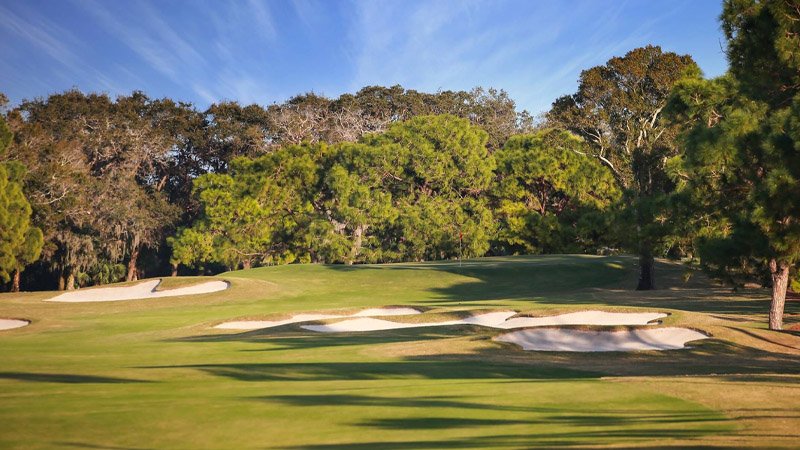When Belleair Country Club reopens in the fall after a Straka-Fry restoration, it will be as if Florida's oldest golf course took a step back in time.
Donald Ross completed all 36 holes at Belleair in the Tampa Bay area, making it the oldest course in a state not always associated with classic era architecture.
"A lot of places claim to be designed by Ross, but he never visited the site. He spent a lot of time here," said Jason Straka of the Columbus, Ohio-based golf course architecture firm.
"They've had the greens and bunkers rebuilt every few years; the last time was in 2007. The West Course still has the bulk of the routing intact since Ross built it."
Straka has many of the notes Ross penned when he designed Belleair and when he was brought back to Florida in 1924 to tweak his work.
"You should see his notes," Straka said. "It wanted this to be a hard golf course."
For Straka, the challenge has been retaining Ross's vision while also keeping the course relevant thanks to changes in maintenance practices and ball and club technology that can take the bite out of older, shorter golf courses. The East Course at Belleair measures just 6,200 yards from the back tees, while the West is stretched to a modest 6,500 yards.
Accomplished golfers can blow right past fairway bunkers that once were strategically placed, and maintenance practices of old meant an abundance of pinnable locations on all 36 greens.

Straka has pulled back tees where he can, tightened up some fairways and moved bunkers. Many of the bunkers at Belleair were much more severe than they are today, and many have been restored to their former hazardous selves.
"We have these debates all the time: What period are we restoring it to? Thirty years ago? One hundred years ago?" Straka said. "We are restoring this to what it looked like in 1924.
"Every bunker was deeper and steeper than, and you're hesitant to do that. Then I thought, they were playing with hickory clubs and gutta percha balls then, so I think we can do it."
Much of Straka's work takes place outside the playing area. He also is restoring naturalized areas with several wild grasses to help cut back on water use. He is planting broomsedge, salt cordgrass, dune sunflower, railroad vine and one of Ross's favorites, wiregrass.
Among the challenges in getting the course ready for its anticipated November reopening has been supply chain issues with hardware, including pipe for irrigation, and a labor shortage in the course construction industry.
Straka is having gravel for greens construction brought in from as far away as Ohio, and if he does not get to the Port of Tampa Bay fast enough to offload it, someone else might have claimed it first. USGA greens specs require having gravel lab tested. Recently, he lost more than 1,000 tons of gravel while waiting for lab results and someone else bought it out from underneath him.
"It's not just golf," he said. "Some of it is being lost to road construction."
Labor shortages, created in part by a hot restoration economy, have shapers in high demand. Straka has had to fend off advances from other projects trying to recruit people working on the Belleair project.
"Just the other day, we had a bunker shaper who got three calls in one day to leave in the middle of the job," Straka said. "People tell them they'll pay more than whatever they're making now if they just leave and come to them.
"There are dozens of projects just in Florida. No one has the irrigation material. We're all getting spoon fed with a little here, a little there to keep things inching along. I've never seen construction this busy; not even in the '90s or early 2000s. I've never seen anything like it."

